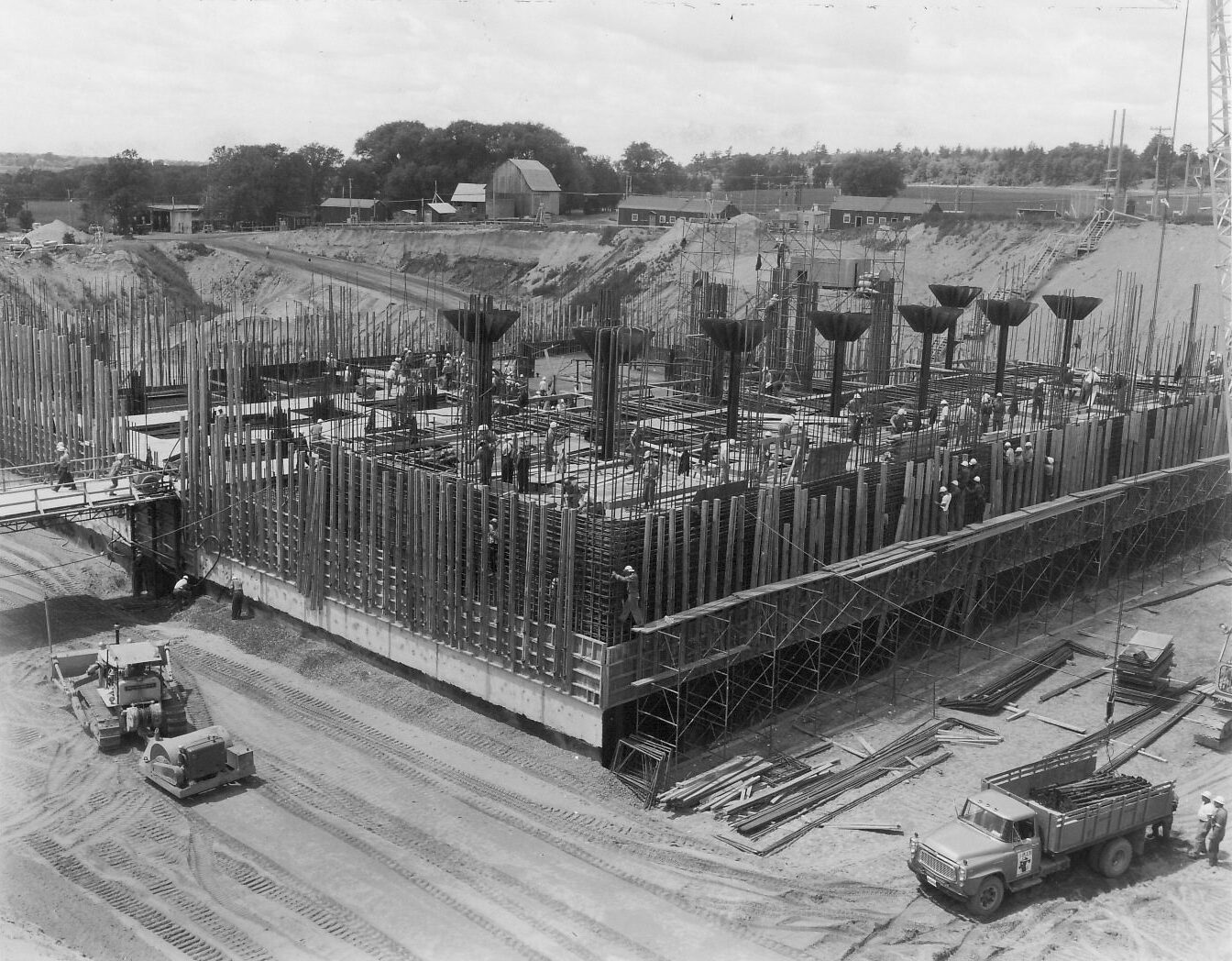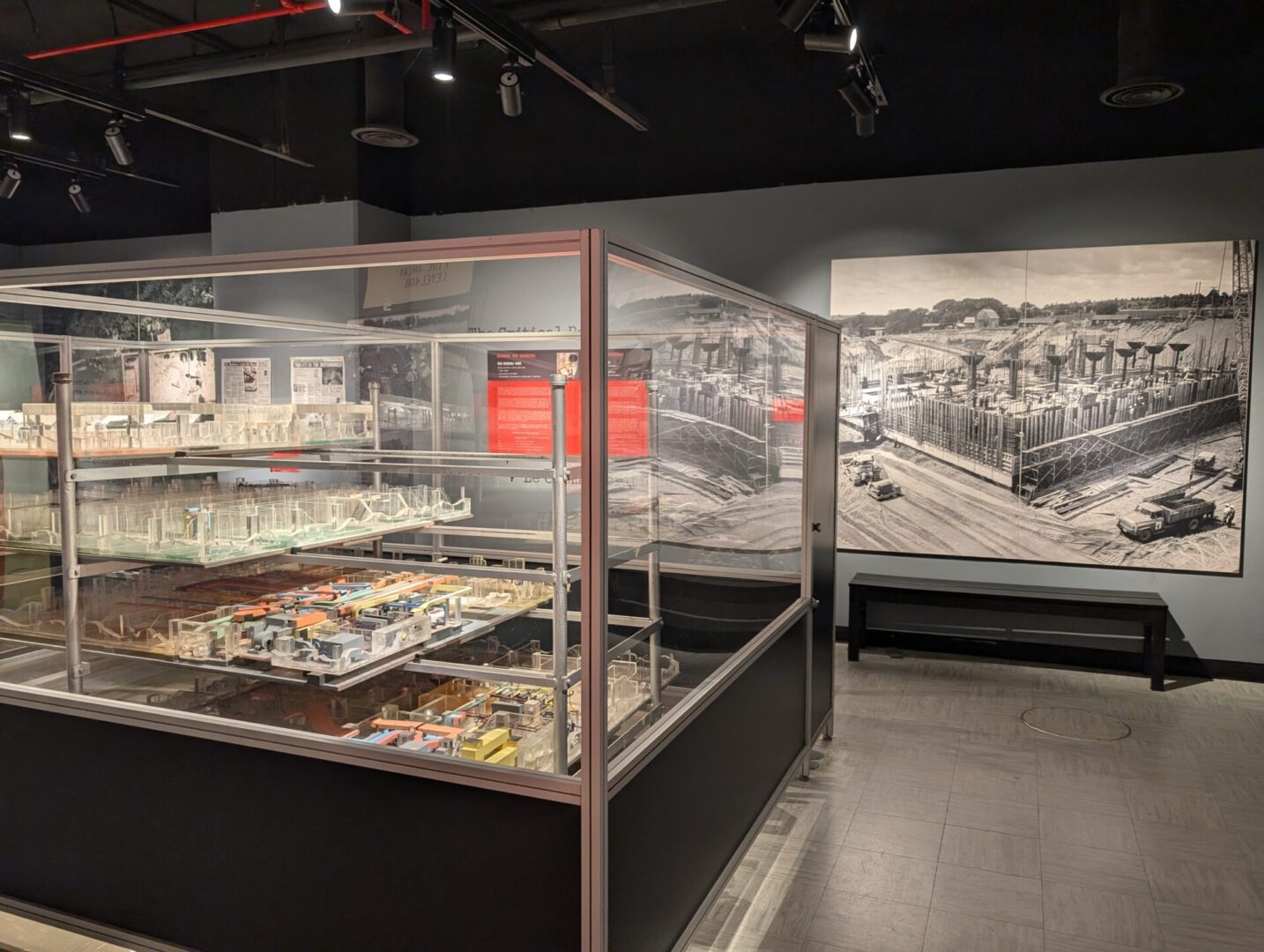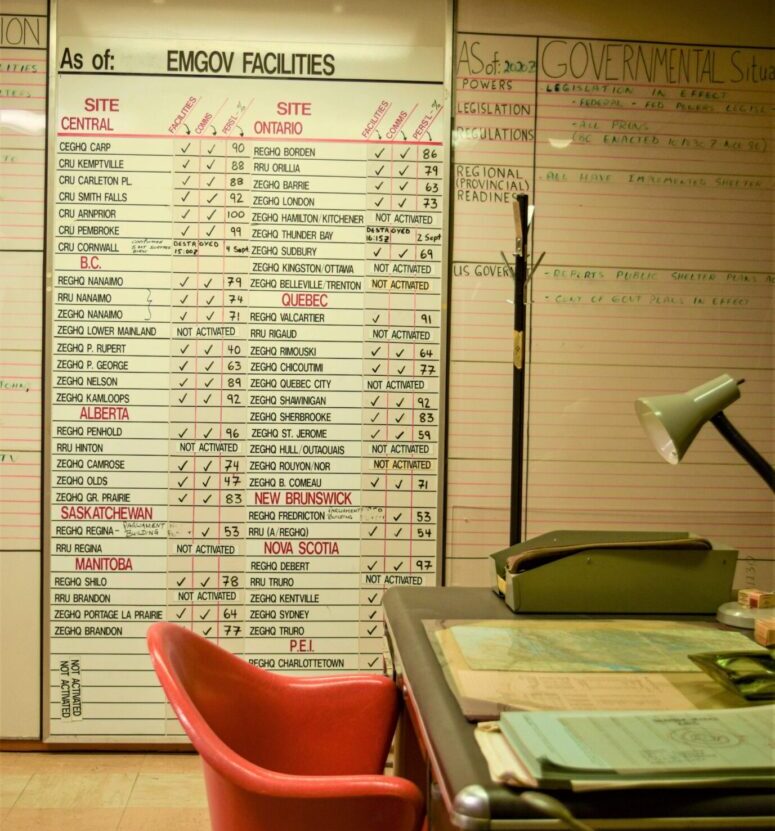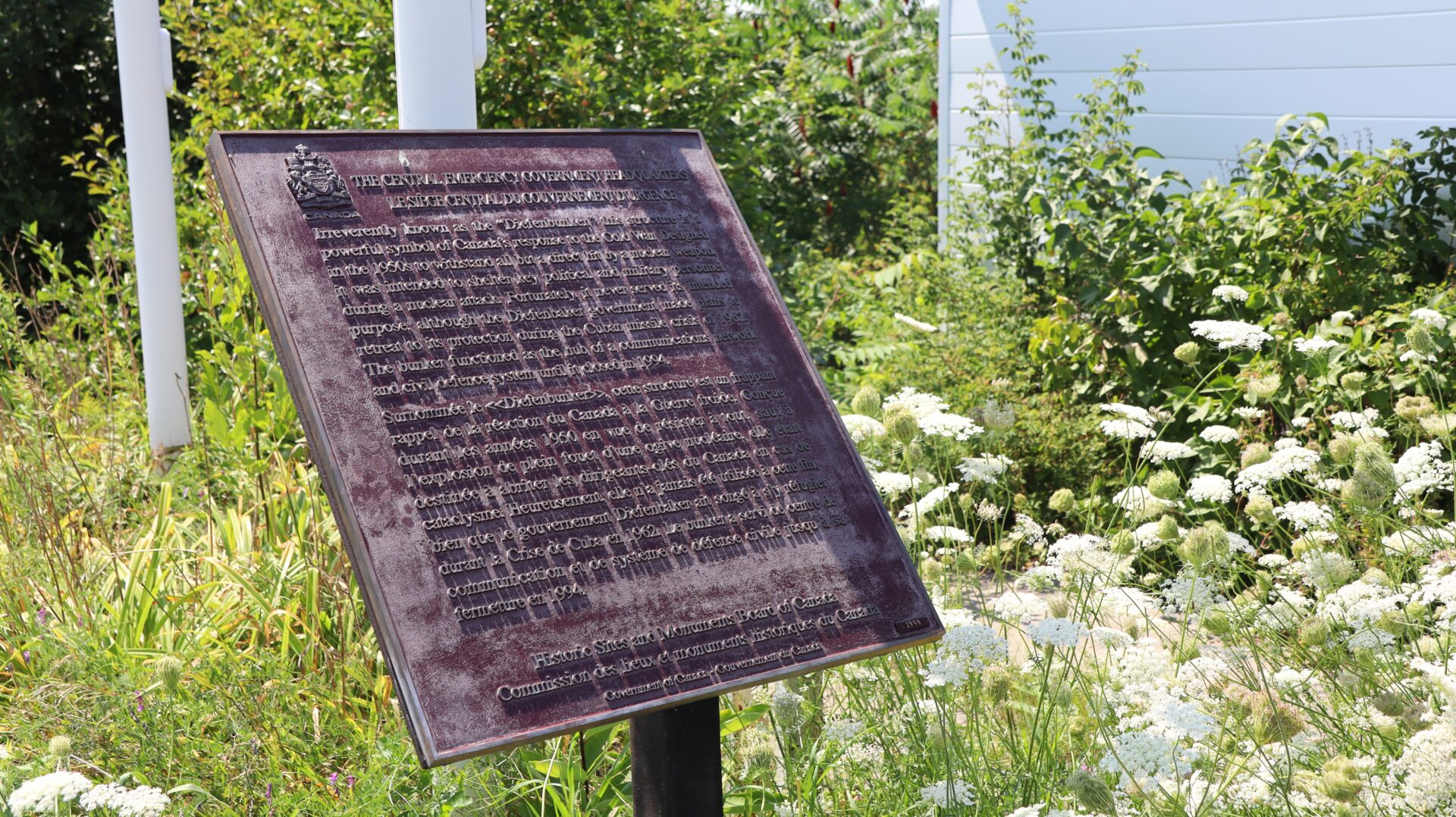Diefenbunker history

The Diefenbunker was originally commissioned in 1959 by Prime Minister John Diefenbaker, as part of continuity of government planning during the height of the Cold War. Designated as the Central Emergency Government Headquarters (CEGHQ), the bunker was intended to house 535 key government and military officials — including the Governor General, the Prime Minister, and members of Cabinet — for a 30-day lockdown period in the event of a nuclear attack on Canada. The bunker would allow the government to operate safely underground in order to assist with the governance and rebuilding of the country.
Beginning as a top-secret building operation under the code name Project Emergency Army Signals Establishment (EASE), construction of the bunker took place over a period of 18 months between 1959 and 1961. The site in Carp was chosen as the perfect location for a 75-foot underground bunker: it was within evacuation distance of downtown Ottawa (30 km west of downtown), it was in a natural valley, and it had the ideal geological conditions for protection. The bunker is an extraordinary marvel of engineering. Designed and engineered by the Foundation Company of Canada, the bunker is made of 32,000 cubic yards of hand-poured concrete and contains 5,000 tons of steel. This massive construction project was completed both on time and on budget, and was the first recorded use of critical path construction methodology in Canada.

The bunker was fully operational by 1962. This central headquarters was designed in conjunction with a network of other designated provincial and regional fallout shelters across Canada, to maintain government leadership during an emergency situation. The majority of these other facilities were one- or two-level structures, and would have sheltered various government and military officials. As the country's headquarters, the facility in Carp was the largest, with four levels totaling 100,000 square feet.
The bunker was built to withstand the force of a 5-megaton nuclear bomb from a distance of 1.8 kilometres away, and featured a thorough air filtration system to keep its occupants safe from any radioactive fallout that may have been in the atmosphere. It is important to note that the bunker was not designed to withstand a direct hit. Its primary line of defence was the fact that its intended purpose as CEGHQ was kept top secret from the public.

Fortunately, Canada did not come under nuclear attack during the Cold War, so the Diefenbunker was not used for its intended purpose as the government’s emergency headquarters. It did, however, operate continuously as a military base between 1962 and 1994. Known as Canadian Forces Station Carp (CFS Carp), the site was staffed 24 hours a day by approximately 100 military and civilian personnel, and played an important role in military telecommunications. During those 32 years of military operations, the building was prepared to go into lockdown at any moment.

In 1994, CFS Carp was decommissioned. That same year, CEGHQ, or “the Diefenbunker,” was designated a national historic site, in recognition of its significance as Canada’s most significant Cold War artifact and its unique underground construction. The Department of National Defence stripped the building of its furnishings and machinery, and sold the property to the Township of West Carleton. Fortunately, a group of volunteers (many of them former CFS Carp employees) stepped forward to preserve the building and open it as a museum. The Diefenbunker: Canada’s Cold War Museum was incorporated and named a charitable organization in 1998.

Explore the museum
See what activities the museum has to offer.
Peek inside
Explore the Diefenbunker from home in our virtual tours.
Descend into history
Immerse yourself in stories and artifacts from the past. This four-storey underground bunker is now a museum and national historic site preserving Canada's Cold War history.
Whether you're a history buff, nostalgic about the Cold War era, or looking for a unique family outing, the Diefenbunker offers an unforgettable experience. Journey into the past and discover the underground secrets of the Diefenbunker.
